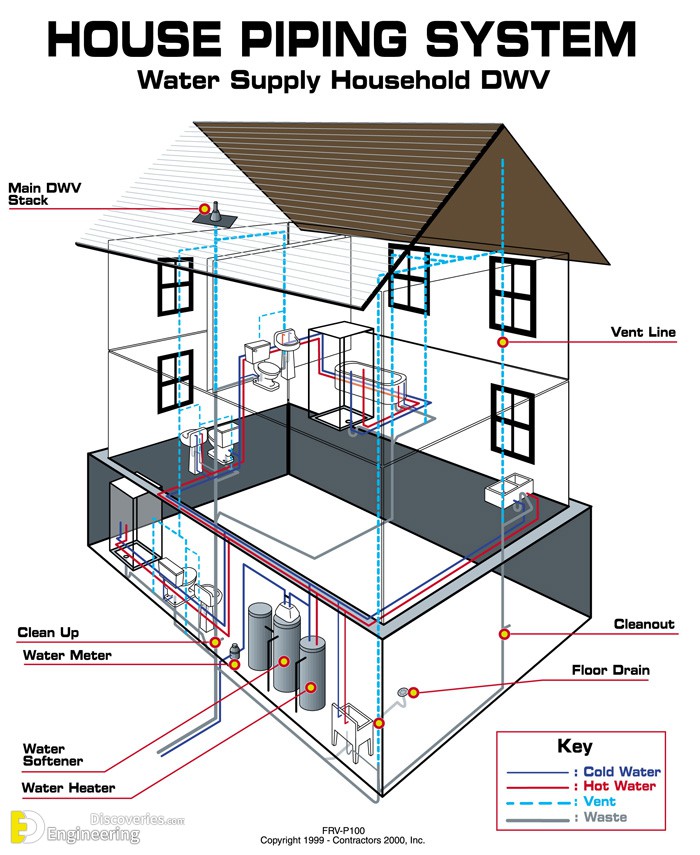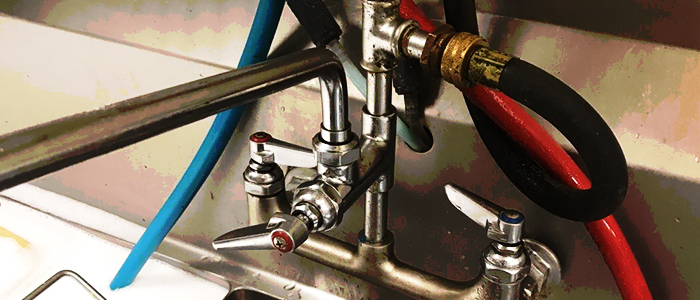Just about every person maintains their own unique way of thinking in relation to Understanding Your Home's Plumbing Anatomy.

Understanding just how your home's pipes system works is important for every home owner. From delivering tidy water for alcohol consumption, cooking, and showering to safely removing wastewater, a well-maintained pipes system is essential for your household's wellness and comfort. In this extensive overview, we'll explore the complex network that makes up your home's pipes and offer pointers on maintenance, upgrades, and managing common problems.
Introduction
Your home's plumbing system is greater than simply a network of pipelines; it's a complicated system that guarantees you have access to tidy water and effective wastewater removal. Recognizing its components and just how they collaborate can help you stop costly fixings and make sure everything runs smoothly.
Standard Components of a Pipes System
Pipes and Tubes
At the heart of your pipes system are the pipes and tubes that bring water throughout your home. These can be constructed from different materials such as copper, PVC, or PEX, each with its advantages in regards to resilience and cost-effectiveness.
Components: Sinks, Toilets, Showers, and so on.
Fixtures like sinks, bathrooms, showers, and bathtubs are where water is utilized in your home. Comprehending exactly how these components connect to the pipes system helps in identifying issues and intending upgrades.
Valves and Shut-off Points
Valves control the circulation of water in your plumbing system. Shut-off valves are crucial during emergencies or when you need to make repair services, permitting you to isolate parts of the system without interfering with water flow to the entire home.
Water System
Main Water Line
The main water line attaches your home to the municipal water or an exclusive well. It's where water enters your home and is dispersed to numerous components.
Water Meter and Stress Regulator
The water meter steps your water usage, while a pressure regulatory authority makes sure that water streams at a safe stress throughout your home's pipes system, preventing damage to pipes and fixtures.
Cold Water vs. Hot Water Lines
Understanding the distinction between cold water lines, which provide water straight from the major, and warm water lines, which bring heated water from the water heater, aids in repairing and preparing for upgrades.
Water drainage System
Drain Pipes Pipes and Traps
Drain pipelines bring wastewater away from sinks, showers, and commodes to the sewer or septic system. Catches stop drain gases from entering your home and also trap debris that could create obstructions.
Air flow Pipes
Ventilation pipelines enable air into the water drainage system, avoiding suction that could reduce water drainage and trigger catches to vacant. Proper air flow is necessary for preserving the stability of your plumbing system.
Importance of Correct Water Drainage
Making certain appropriate drainage protects against back-ups and water damages. Frequently cleaning up drains and maintaining catches can stop costly fixings and prolong the life of your plumbing system.
Water Heating System
Sorts Of Hot Water Heater
Hot water heater can be tankless or conventional tank-style. Tankless heaters warmth water as needed, while tanks keep heated water for instant use.
Just How Water Heaters Link to the Plumbing System
Recognizing exactly how hot water heater connect to both the cold water supply and warm water distribution lines aids in identifying issues like not enough hot water or leakages.
Upkeep Tips for Water Heaters
Routinely flushing your hot water heater to eliminate sediment, checking the temperature level settings, and evaluating for leaks can prolong its lifespan and boost energy performance.
Common Pipes Issues
Leaks and Their Reasons
Leaks can take place due to maturing pipes, loosened fittings, or high water stress. Attending to leakages quickly protects against water damage and mold and mildew growth.
Blockages and Obstructions
Blockages in drains pipes and toilets are often brought on by flushing non-flushable things or a buildup of oil and hair. Making use of drainpipe displays and being mindful of what decreases your drains can avoid blockages.
Indicators of Plumbing Issues to Expect
Low water pressure, slow-moving drains, foul odors, or uncommonly high water costs are signs of prospective plumbing issues that need to be dealt with immediately.
Pipes Upkeep Tips
Routine Inspections and Checks
Arrange yearly pipes inspections to catch problems early. Seek signs of leaks, rust, or mineral build-up in taps and showerheads.
Do It Yourself Upkeep Tasks
Simple tasks like cleansing faucet aerators, checking for bathroom leakages making use of dye tablets, or protecting revealed pipelines in cold climates can prevent significant plumbing problems.
When to Call a Specialist Plumber
Know when a plumbing concern requires expert experience. Attempting complicated fixings without proper understanding can bring about more damages and higher repair costs.
Upgrading Your Pipes System
Reasons for Updating
Updating to water-efficient fixtures or replacing old pipelines can boost water quality, decrease water expenses, and raise the worth of your home.
Modern Pipes Technologies and Their Benefits
Check out innovations like wise leak detectors, water-saving toilets, and energy-efficient water heaters that can conserve cash and reduce ecological impact.
Cost Considerations and ROI
Determine the ahead of time prices versus lasting savings when considering plumbing upgrades. Numerous upgrades spend for themselves via reduced utility bills and fewer repair work.
Ecological Effect and Preservation
Water-Saving Components and Devices
Mounting low-flow taps, showerheads, and commodes can significantly reduce water usage without sacrificing efficiency.
Tips for Decreasing Water Usage
Easy practices like repairing leaks promptly, taking much shorter showers, and running complete tons of washing and meals can save water and lower your utility bills.
Eco-Friendly Plumbing Options
Consider lasting pipes materials like bamboo for flooring, which is durable and environmentally friendly, or recycled glass for counter tops.
Emergency situation Readiness
Actions to Take Throughout a Plumbing Emergency
Know where your shut-off valves lie and just how to switch off the water system in case of a ruptured pipe or significant leakage.
Relevance of Having Emergency Situation Contacts Convenient
Maintain contact details for regional plumbers or emergency solutions easily available for fast response throughout a pipes dilemma.
Do It Yourself Emergency Fixes (When Suitable).
Short-lived repairs like making use of duct tape to spot a leaking pipeline or placing a container under a dripping tap can minimize damages up until a specialist plumbing technician arrives.
Final thought.
Comprehending the composition of your home's plumbing system equips you to keep it efficiently, conserving time and money on fixings. By adhering to routine upkeep routines and remaining notified concerning modern pipes innovations, you can guarantee your pipes system runs efficiently for several years to come.
HOW YOUR PLUMBING SYSTEM WORKS
Which Pipes Do What?
- Blue lines = fresh water supply entering the building
- Red lines = hot water supply entering the building
- Grey lines = pipes carrying waste away from the building and venting pipes carrying gases away from the building (through the roof)
YOUR MAIN PLUMBING SYSTEMS
There are two main plumbing systems that support your home s basic plumbing needs one that brings clean water into your home, and one that sends dirty water away from your home. Connected to the toilet, bath, shower, and other faucets in your home, these two systems keep your water flowing in the right directions.
ACCESSING FRESH WATER
Fresh and clean water is brought into your home through the main water supply line . Filtered through one pipe, this water is pressured to flow into the various fixtures in your home at any given time.
This water can be sourced from a well located on your property, a pond or river (mostly cottages), or, as in most cases, from the city s municipal water treatment centre. However, it is important to note that water that is untreated, such as the water siphoned from ponds or rivers, may not be safe to drink. Personal water supplies always need to be treated for hardness and contaminants before consumed.
MUNICIPAL WATER SUPPLIES
- Improve taste and odour
- Remove sediment
- Eliminate hardness
- Reduce chlorine
COLD WATER SUPPLY VS. HOT WATER SUPPLY
Cold water flows into your home or building through the service line, which then distributes hot or cold water to your fixtures. This line is most commonly run through a central column that runs floor to floor. Hot water runs in short and straight pipes as the longer the pipeline, the more heat that will be lost in the transfer. Having shorter pipes also allows residents to access hot water more quickly.
WASTE WATER SYSTEM
Your wastewater system is divided into two parts pipes that send wastewater away from your home and venting pipes that send sewer gas away from your home. Sewage water travels through pipes that flush the water and waste towards local sewers that are operated and managed by your city or town. Most sewer systems rely on gravity to move the wastewater to where it needs to go.
The further away from your toilet or sink, the larger wastewater pipes become. This allows for waste to be disposed of from various parts of your home or business at once without pipe blockages. The angle and flow of these pipes are also essential for keeping your waste pipes clear of build up.
https://harrisplumbing.ca/how-your-home-plumbing-system-works/

I was guided to that article about Exploring Your Homes Plumbing Anatomy from someone on another website. Appreciated our review? Please share it. Let someone else discover it. Thanks so much for taking the time to read it.
Click Here
Comments on “The Key Components of Your Home's Plumbing System”